From Our Adoption Story To Your First Steps: A Real Guide To Bringing Home A Dog
When you purchase through links on our site, we may earn a commission. Here’s how it works.
So you’re thinking about adopting a dog? That’s amazing! You’re about to make one of the most rewarding decisions of your life, but it’s not as simple as picking out the cutest face. The fact that you’re doing your homework first tells us you’re already on track to becoming a fantastic pet parent. A tail is wagging somewhere out there, just waiting to meet you.
Table of Contents
Adopting a dog is exciting, heart-melting, and sometimes a little overwhelming, but in the best way. From choosing the right age to understanding what life looks like after that first tail wag, we’ve got your back. Whether you’re drawn to bouncy puppies, goofy teens, or wise old souls, this guide walks you through what to expect, how to prepare, and how to make the whole journey one you’ll never forget.
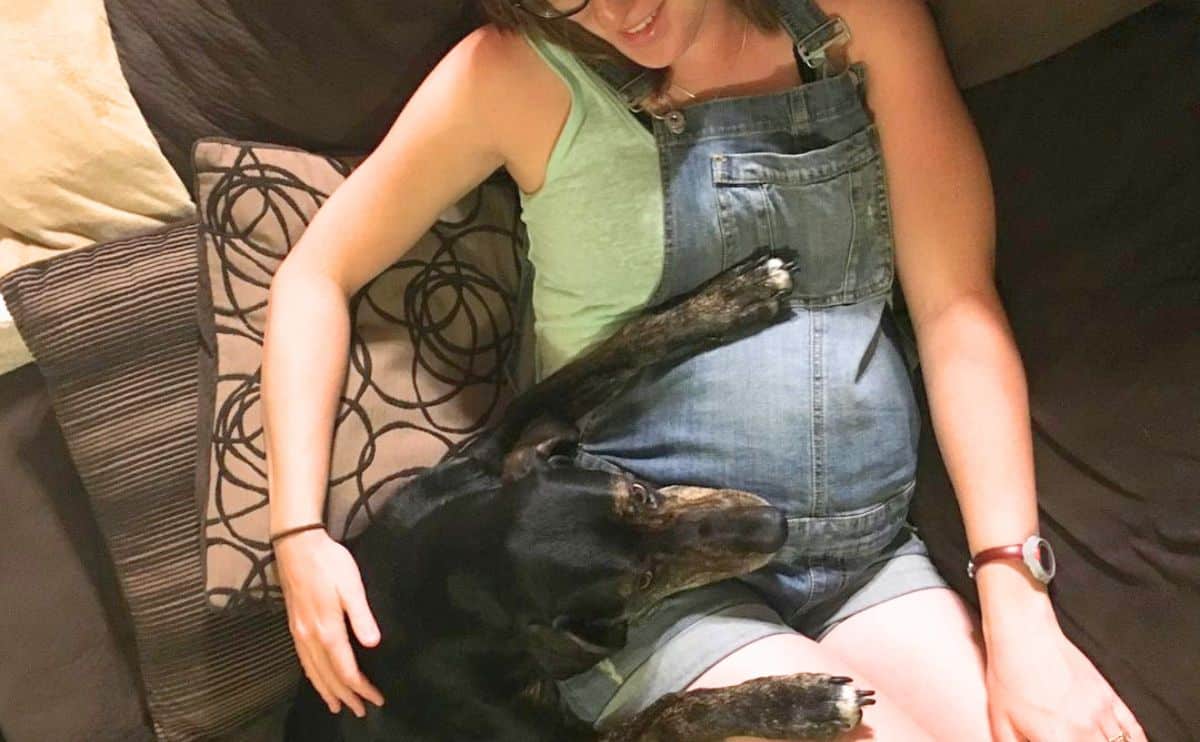
Puppy Love or Puppy Mayhem? The Truth About Adopting a Puppy
One of the first big decisions you’ll face in the adoption process is whether to bring home a puppy or an older dog. If you’ve raised a dog before, you might already know what you’re getting into. Is this your first time? Buckle up; puppyhood is adorable chaos.
From the heart-melting moments to the chewed-up shoes, here’s what puppy life looks like. Spoiler alert: it’s not all Instagram-worthy cuddles and perfect paw prints. But for the right person, it’s the beginning of a beautiful, tail-wagging love story.
| The Puppy Pros | The Puppy “Challenges” (a.k.a. Reality Checks) |
|---|---|
| You get to shape their behavior from the start. Training can be incredibly rewarding, especially if you’re ready to teach them your way (and are okay with the occasional tantrum). | They need constant care and attention. Puppies are like toddlers with sharper teeth. You’ll be their whole world 24/7. |
| They grow up with your family. You’ll share their whole life journey from the first squeaky toy to their senior years. | House training takes time. Expect accidents: lots of them. Stock up on cleaner. |
| Maximum cuteness overload. Puppy breath. Floppy ears. Tiny zoomies. Enough said. | Destruction is part of the deal. Shoes, rugs, cords, nothing is safe until they learn the rules. |
| A lifelong bond. There’s something special about raising a dog from their earliest days. They imprint on you in a big way. | They have energy for days. If you’re not ready to play, walk, and play again… think twice. |
| You control their health from the beginning. From vaccinations to diet to exercise, you can lay the groundwork for a long, healthy life. | Vet bills can add up quickly. Puppy healthcare isn’t always cheap, between vaccinations, checkups, flea prevention, and potential accidents. |
Puppyhood can be wild, messy, and exhausting, but if you’re up for the ride, it’s one of the most rewarding adventures you’ll ever have. Still unsure? Chat with someone who’s recently raised a puppy to get the unfiltered version. If you’d rather skip the shredded slippers and 3 a.m. potty runs, adopting an older dog might be your perfect match.

The Awkward Stage: Why Teenage Dogs Get Overlooked (and Why They’re Amazing)
Welcome to the world of adolescent dogs, those lanky, clumsy, loveable goofballs somewhere between tiny pups and full-grown adults. Depending on the breed, this age range usually falls between 6 and 36 months. Think of it as their “awkward teenager” phase: long legs, boundless energy, and a whole lot of personality that hasn’t quite figured itself out yet.
Adolescent dogs are still growing, both physically and mentally. They’re often house-trained (or nearly there) but haven’t fully outgrown the zoomies, selective hearing, or occasional sock theft. A teenage pup might be your sweet spot if you’re looking for a dog past the newborn stage but still open to learning and bonding.
| Why You’ll Love Adopting an Adolescent Dog | What to Watch Out For |
|---|---|
| You get a better idea of their personality. Their personalities have started to settle, so you can get a more accurate feel for whether they’re shy, social, high-energy, or chill. | Don’t expect a fully polished dog. Adolescents are still figuring out boundaries and can be stubborn or forgetful. Be consistent, and don’t skip training time. |
| Some basic training might already be done. Many adolescent dogs have learned a few important life skills, like potty training, crate comfort, or walking on a leash. | Just like human teenagers, adolescent dogs can act before they think. They might chase squirrels, jump on guests, or grab your sandwich without hesitation. |
| They still have puppy playfulness without all the chaos. It’s a great age for bonding. | Not quite housebroken? It happens. Some adolescent rescues have had inconsistent care or bounced between homes. Don’t assume anything. |
| Often overlooked in shelters. Puppies get swooped up quickly, and seniors sometimes have a soft spot with experienced adopters, but adolescent dogs can sit in limbo. | They may have missed early socialization training. Some adolescent dogs don’t get the best start in life. That might mean they’re nervous around strangers, unsure how to play, or fearful of specific experiences. |
Adolescent dogs are full of charm, energy, and untapped potential. They’re at a stage where they’re ready to bond deeply and learn fast, but they’ll still need your guidance, patience, and plenty of playtime. If you’re looking for a best friend who’s past the puppy puddles but still young at heart, this could be your perfect match.
Rio’s Second Chance: A New Life Beyond the Scale
Rio came into his new home as an overweight adolescent Golden Retriever, but beneath the extra weight was a loyal, loving dog ready for a fresh start. At the time of adoption, Rio was carrying 30 extra pounds, struggling with mobility, and missing out on the joys of just being a dog. But with patience, regular exercise, and a whole lot of love, he transformed, losing weight over five months and gaining confidence, energy, and a brand-new lease on life. His journey is proof that second chances really can change everything. Learn more about Rio’s transformation in this article. You can see Rio in the adorable video below!
Senior Dogs: The Gold in the Gray
There’s something incredibly special about adopting an older dog. These wise, soulful companions often get overlooked at shelters. Still, they come with gifts that puppies simply can’t offer: calm energy, emotional maturity, and an unspoken understanding that they’ve been waiting, maybe even aching, for someone like you.
Older dogs are ideal for first-time pet parents, busy households, or anyone who wants the joy of a dog without the whirlwind of puppy training. Many are already housebroken, know basic commands, and are happy to skip the chaos in favor of cuddles on the couch and leisurely strolls.
| Why You’ll Love Adopting an Older Dog | A Few Things to Consider |
|---|---|
| What you see is what you get. There’s no guessing game regarding size, temperament, or energy level. You’re meeting the dog they already are, not who they might grow into. | Some older dogs have faced neglect, abandonment, or inconsistent care. They might need time, patience, and extra reassurance as they learn to trust again. |
| Lower energy, lower demands. Older dogs are often content with a couple of short walks, some affection, and a comfy place to nap. | Older dogs may carry a few quirks, like shyness around new people or sensitivity to certain situations. But with consistent care and kindness, they often blossom into calm, loving companions. |
| You’ll likely have access to medical history. Shelters often have a solid picture of a senior dog’s health status, which can help you prepare for their care and avoid surprises. | Senior dogs can be more prone to medical conditions like arthritis, dental problems, or vision loss. |
| The bond is something else entirely. There’s a depth to a senior dog’s gratitude. They seem to know they have a second chance and don’t take it lightly. | Sensitive stomachs are also more common in senior dogs. They may no longer tolerate certain foods they once loved, or they might develop digestive issues like gas, diarrhea, or appetite changes. |

Slower Steps, Stronger Bonds: Life With an Older Dog
Some older dogs may experience incontinence, meaning the occasional accident indoors, especially overnight or when they get excited. This doesn’t mean they’re not house-trained; it just means their bodies start showing their age. Waterproof bed covers, potty pads, and a little extra grace can make life easier for both of you.
Are you worried that an older dog might come with “baggage”? Don’t be. They often come with heart, wisdom, and quiet resilience. Many have spent years waiting for a soft bed, a steady meal, and someone to believe in them. That someone could be you.
Adopting a senior dog means showing up for them in their golden years—and the loyalty and gratitude you’ll receive in return are beyond measure. They may need softer food, gentler walks, and a few extra potty breaks, but they’ll give you the same heart they always had—just wrapped in a little more wisdom (and maybe a little more snoring).
And in our experience? The dogs with the hardest pasts often become the most devoted, affectionate companions. They don’t just wag their tails, they wag their whole hearts.
Behind the Scenes: Our Team’s Real-Life Dog Adoption Stories
They say you don’t choose the dog. Sometimes, the dog chooses you. We’ve felt that firsthand. These stories aren’t just part of our past; they’re why we believe so profoundly in adoption. From awkward first meetings to the moment it just clicked, every one of us has a story of a dog who changed everything. Here’s a look at the love, the lessons, and the unforgettable journeys that brought us together.
Lily’s Adoption Story: Rescued, Recovered, and Home at Last
We first heard about Lily through a friend who volunteers at a local shelter. She shared photos and the story of a gentle brown dog who had survived years of neglect. Chained up and starved for most of her life, Lily was only saved when animal control intervened. Despite everything she had endured, she remained sweet, trusting, and eager for affection.
Her story stayed with us, so we met her and instantly knew she belonged with us. That same afternoon, we filled out the adoption papers, and the next day, we brought her home.
We renamed her Lily, inspired by the spring season and another rescue we once loved. Our other dog, Bella, welcomed her right away. Though she was the same age, Lily acted like a curious puppy discovering the world for the first time. Bella took her under her wing, teaching her how to chase frisbees, explore the yard, climb stairs, and wrestle with joyful abandon.
At her first vet checkup, we learned Lily’s recovery would take some time. She had ear infections, sore hips, and signs of malnourishment, but she had already gained two pounds in just a week. Her energy, appetite, and love for her new life gave us hope.
We’re still on the journey with Lily, but she grows stronger, sillier, and more confident every day. Watching her heal has been one of the most rewarding experiences of our lives. She’s not just a rescue. She’s family.
– Michelle Schenker, Rescue Dog Mom, Canine Journal Co-Founder
Lily’s story touched our hearts, but there’s so much more to tell. We’ve shared more about Lily’s healing, personality, and happy ending right here, and you can see her playing in the video below.
Next is the adoption story of my sweet pup Sally.
Sally’s Story: From Overlooked to Absolutely Loved
We had been following the Humane Society’s Facebook page and came in with a few dogs in mind: two young Labs and a 3-year-old Treeing Walker Coonhound mix named Sally. Since my husband and I both grew up with Labradors, we felt confident about meeting them, but we were intrigued by Sally’s story. She was the first dog we met that day, and her presence immediately stood out.
An employee told us that Sally had been found on the side of the road and had spent the longest time at the shelter, about eight months. She’d been adopted briefly but returned for being “too hyper,” which led to depression and withdrawal. Her story deeply affected us. After meeting all the dogs, we circled back to Sally and learned more about her personality. The staff said she would thrive with a family that enjoys hiking, camping, and exploring, which just so happens to describe us perfectly.
Since we brought Sally home, she’s easily fit into our lives. She’s well-behaved, playful, and eager to please. She loves frisbees, walks, and her squeaky hedgehog toy, though she’s still figuring out how fetch works. More than anything, she brings us joy and balance. We don’t understand why someone thought she was “too hyper” to us; she’s the perfect match. It feels like she chose us just as much as we chose her.
The video below celebrates Sally’s adoption day with much love and fun.
From Breakdown to Breakthrough: Life With Two Rescue Dogs
The first dog I rescued is called Bonkers, and he is an English Bull Terrier mix. He lived on the streets for the first year and was subjected to physical abuse and other trauma. He began shutting down in the shelter, and no one wanted him. I took him home, and he was feral and constantly destructive for three months. Going from the streets to a house was difficult, and living with love was clearly an experience he had never had, cowering all the time. I felt like I took on too much with Bonkers. But with nine months of dedication and perseverance, he is now the kindest doggy soul I’ve ever met. Eight years later, I’m so glad I chose him.
My second rescue dog is named Chips, and she’s a Dachshund. I’ve had her for three months and am only now getting past the regret stage. I am a new mom and didn’t realize how hard it would be to raise a toddler and a puppy. Chips has destroyed many things, forgotten her house training, and kept us awake at all hours. Recently, she got into a tray of painkillers in a zipped bag in a closed pocket at the bottom of my gym bag, which was in a cupboard. She ate eight tablets of ibuprofen and became very sick.
I have had to rearrange my daily routine, put locks on every cupboard, and focus on the positives that she brings to our lives, including humor and fun. I still don’t know how she got into that bag, but after many tears, a lot of money at the vet, and a considerable increase in exercise, she seems to be less erratic at home. I thought I couldn’t handle her alongside my toddler. But I remind myself that she had four homes before us, so she’s had a lot of upheaval. And although it’s an ongoing process, I know we are doing very well together.
– Emma Braby, Rescue Dog Mom, Canine Journal Writer
Meet Bonkers and Chips in the video below, they are so much fun, even when they have the zoomies!
From Shelters to Rescues: How to Start Your Dog Adoption Journey
The journey to adopting a dog might start with a simple search, but once you find the right one, it becomes something much more powerful. It’s not just about finding a pet. It’s about welcoming a friend, a confidant, a sidekick who will be there for morning walks, late-night cuddles, and everything in between.
The good news? The adoption process is often easier than it sounds. And there are more amazing dogs out there waiting for a second chance than you might imagine. Whether you’re hoping for a goofy puppy, a mellow senior, or a playful adolescent with big ears and an even bigger heart, there’s a dog out there who’s just right for you.
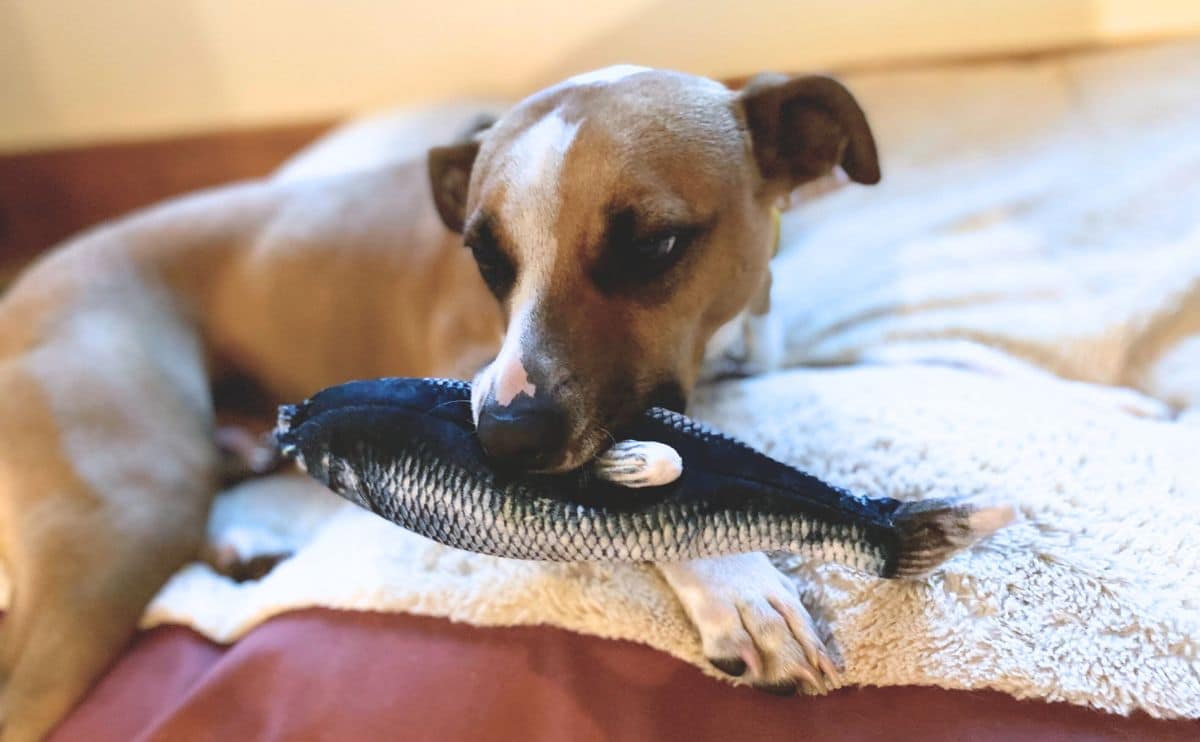
Why Adopting Locally Matters
When you choose to adopt from a local shelter or rescue, you do more than add a dog to your family. You’re truly saving a life. Local shelters are often overcrowded, and every adoption makes room for the next dog in need. It’s one of the most compassionate choices you can make.
But that’s not all. Adopting locally also gives you the chance to connect in person. Most shelters encourage meet-and-greets, where you can:
- Take the dog for a walk and see how they respond on a leash.
- Play in a fenced area to gauge their energy level and curiosity.
- Introduce them to your family and watch how they interact with kids or other pets.
- Ask real-time questions about the dog’s behavior, health, and history.
Many rescue groups also offer trial adoptions, home visits, or “foster-to-adopt” options so you can be sure your match is genuinely a good fit before committing long-term.
Where to Start Looking
There’s no single “right way” to find your perfect dog, but here are some of the most trusted and accessible options:
Local Animal Shelters & Humane Societies
Start close to home. Municipal shelters, humane societies, and SPCAs often have a wide range of dogs of all breeds, ages, and temperaments. The staff and volunteers know their dogs well and can help guide you based on your experience, household, and lifestyle.
Pros:
- Affordable adoption fees
- Vaccinations and spay/neuter are usually included
- Dogs are often temperament-tested
Behavioral Red Flags to Watch for in Shelters
While it’s normal for dogs to act a little unsure in shelter environments, some behaviors might suggest deeper challenges ahead. Look for signs like extreme fearfulness (freezing, cowering in corners), unprovoked aggression (lunging or snapping with no apparent trigger), or total shutdown (lack of interest in people, food, or surroundings). These aren’t automatic deal-breakers but may require experienced handling, behavior support, or professional training. Don’t be afraid to ask the shelter staff or foster caregivers for honest insights. They often know which behaviors are stress-related and which may persist in a home setting.
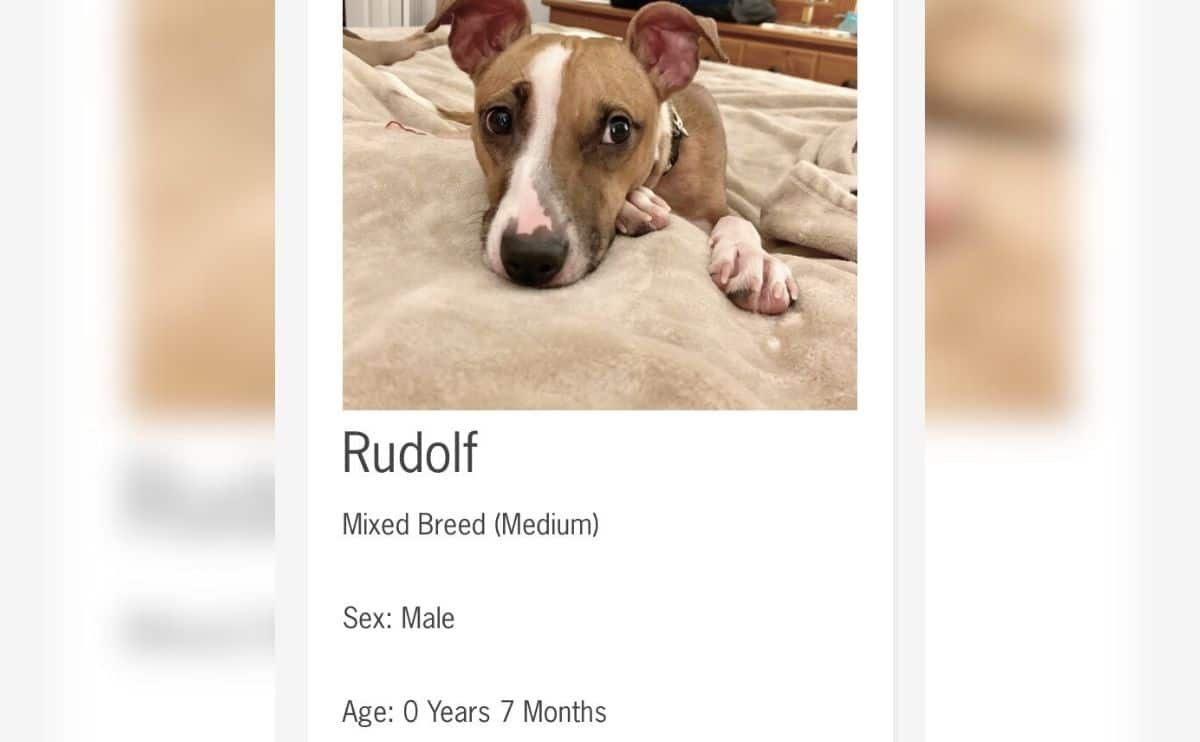
Breed-Specific & General Rescue Organizations
Rescue groups are a fantastic resource if you’re drawn to a certain breed or size. Many specialize in specific types of dogs, like Pit Bulls, Dachshunds, or large breeds, while others focus on puppies, seniors, or medical-needs dogs.
These rescues often place dogs in foster homes, so you can better understand how the dog behaves in a real-life setting.
They’ll often tell you:
- If the dog is crate-trained or housebroken
- How they act around kids, cats, or other dogs
- Whether they’re shy, outgoing, calm, or energetic
Online Adoption Platforms
Plenty of reputable websites partner with shelters and rescues to help match dogs with adopters. These platforms let you filter dogs by location, age, breed, size, and personality traits, making it easier to find dogs that fit your lifestyle and preferences.
Here are a few great places to start your search:
- AdoptAPet.com – Search by location, breed, or personality.
- ASPCA.org – Offers tools and resources alongside adoption listings.
- Petfinder.com – One of the largest adoption databases, with detailed pet profiles and filters.
- Rescue Me! – A national directory of adoptable dogs organized by breed and location. Rescue Me! also supports smaller rescues and fosters that may not appear on more significant sites.
- Hearts United for Animals – A no-kill shelter and sanctuary specializing in long-distance adoptions. They transport dogs from their Nebraska base to adopters across the country.
No matter where your search begins, the connection you feel is most important. Sometimes it’s instant. Sometimes it takes a second visit. But when it’s right, you’ll know—and chances are, your new best friend will know too.
How to Adopt a Dog: What the Process Looks Like
So you’ve found a dog that makes your heart skip a beat. Now what?
The adoption process is usually straightforward, but every step plays an essential role in ensuring the match is a good fit for you and your future dog. This isn’t just about filling out forms. It’s about starting a lifelong bond with the right foundation.
Here’s what the typical adoption process looks like from start to finish:
Step 1: Spend Time with the Dog
Before deciding, take some time to interact with the dog. Most shelters and rescues allow and encourage meet-and-greet sessions. Use this opportunity to:
- Play with them in a yard or quiet space.
- Introduce them to your family members or roommates.
- Observe how they react to being touched, spoken to, or gently redirected.
This time is all about getting a feel for their personality, energy, and comfort level around you.
Step 2: Meet a Few Other Dogs
Even if one dog seems perfect, meeting a few others for comparison can be helpful. You might discover another dog is an even better fit for your lifestyle or household. Keeping an open mind can lead to the most meaningful connections.
Step 3: Visit Again if You Can
Return for a second visit on another day. Dogs may be more relaxed and responsive the second time around. A follow-up meeting can also confirm whether your initial connection holds up or if another dog stands out more after some time to reflect.
Step 4: Let the Shelter or Breeder Know You’re Ready
Once you’ve found your match, talk to the shelter, breeder staff, rescue organization, or foster parent. They’ll walk you through the next steps, which usually include:
- Filling out an adoption application
- Answering questions about your living situation and experience with pets
- Completing a home check or providing references.
- Paying an adoption fee.
- Each organization has its own process, but most are happy to help you through it.
Step 5: Prepare for a Waiting Period
Adoption rarely happens on the same day. Most dogs need a quick vet check, spay or neuter surgery, booster shots, or time to transition out of foster care. This short waiting period helps ensure the dog is healthy and ready to go home with you.
Use this time to prepare your home, ask follow-up questions, and ensure you’re ready to welcome your new family member. Here are some tips for bonding with your new dog when you get home.
Step 6: Get Your Home Ready
Gather the basics: food, water, and food bowls, a collar and leash, a bed, toys, and any recommended supplies from the adoption center. Set up a quiet space where your new dog can relax and adjust during those first few days. Having everything in place before they arrive makes a big difference.
Adopting a dog is more than a one-time event. It starts a shared life. Taking these thoughtful steps helps you build trust and stability from day one. And when your new dog curls up beside you, finally home, you’ll know it was all worth it. There’s much to think about, but this new dog guide should help you ensure a smooth transition.
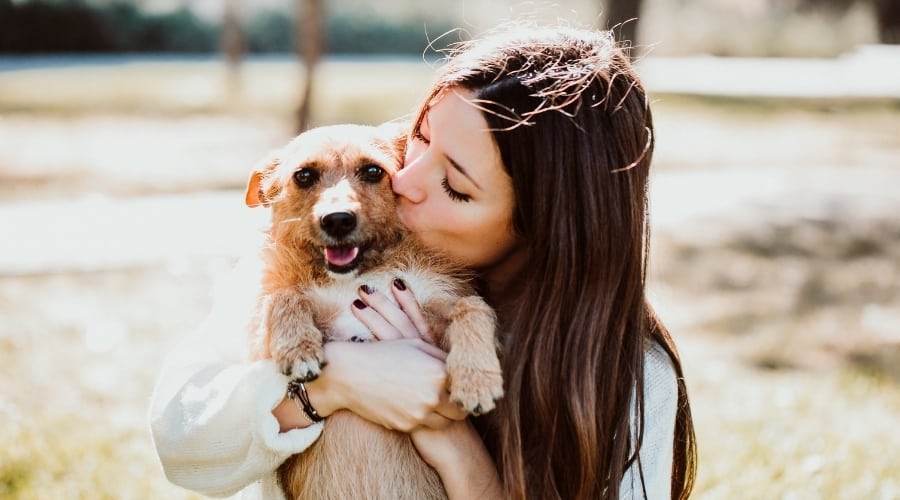
The First 30 Days: What to Expect
Bringing home a new dog is exciting, but the first month can be an emotional rollercoaster. Most dogs need time to decompress, and their true personality might take days or even weeks to emerge. Expect some accidents, confusion about routines, and cautious behavior early on. Stick to a consistent schedule, keep things low-key, and resist the urge to overstimulate with too many visitors or outings.
Building trust takes time. By the end of the first month, most dogs begin to relax, bond with their new family, and settle into their new rhythm. Patience and routine are your best tools during this adjustment phase.
Do you have a dog adoption story to share? We’d love to hear it in the comments or on our forums.
Preparing Your Home: How to Dog-Proof Like a Pro
Before you bring home your new furry family member, it’s time to turn your space into a safe, welcoming environment. Think of it like toddler-proofing, only fuzzier and more likely to involve zoomies.
Here’s how to get your home dog-ready, whether you’re adopting a curious puppy or a full-grown snoozer:
General Dog-Proofing Tips
- Hide cords and chargers. Puppies (and some adults) love to chew. Secure cords behind furniture or with cord protectors.
- Tuck away trash cans. A dog’s nose is powerful, and your kitchen trash might as well be a buffet. Use lidded cans or keep them in cabinets.
- Put valuables out of reach. That favorite pair of shoes? Those plants you’re proud of? Yeah, move those.
- Secure cabinets and lower drawers. Curious paws can open things you’d rather they didn’t, like cleaning supplies or snacks.
- Block off no-go zones. Use baby gates to close off rooms or stairs until your dog learns the house rules.
Puppy-Specific Prep
- Get on your hands and knees. Seriously. See the world from a puppy’s perspective to spot trouble spots you’d never notice standing up.
- Remove small objects and choking hazards. Buttons, hair ties, coins, socks, if it fits in their mouth, it’s fair game.
- Stock up on teething toys. Offer acceptable alternatives before your pup makes your furniture their personal chew bar.
Senior Dog Considerations
- Add rugs for traction. Older dogs with joint issues can struggle on slick floors.
- Limit stair access. Use baby gates or ramps to prevent injury.
- Create a comfy, quiet rest zone. Seniors appreciate peace, quiet, and a supportive bed.
Learn more about puppy-proofing your home in the video below:
Cost Breakdown for New Pet Owners
Adopting a dog comes with both heartwarming moments and real financial responsibility. Here’s a basic breakdown of typical first-year costs:
- Adoption fee: $50–$500 (varies by shelter/rescue)
- Initial vet visit and vaccinations: $100–$300
- Spay/neuter (if not included): $150–$400
- Food and treats: $300–$600/year
- Supplies (bed, crate, bowls, leash, toys): $150–$300
- Training classes or behavior help: $100–$400
- Routine vet care (annual exam, heartworm/flea prevention): $300–$700/year
- Emergency vet fund (recommended): Aim to set aside $500–$1,000
Being financially prepared helps ensure your new dog gets the care they deserve, from routine checkups to unexpected surprises.
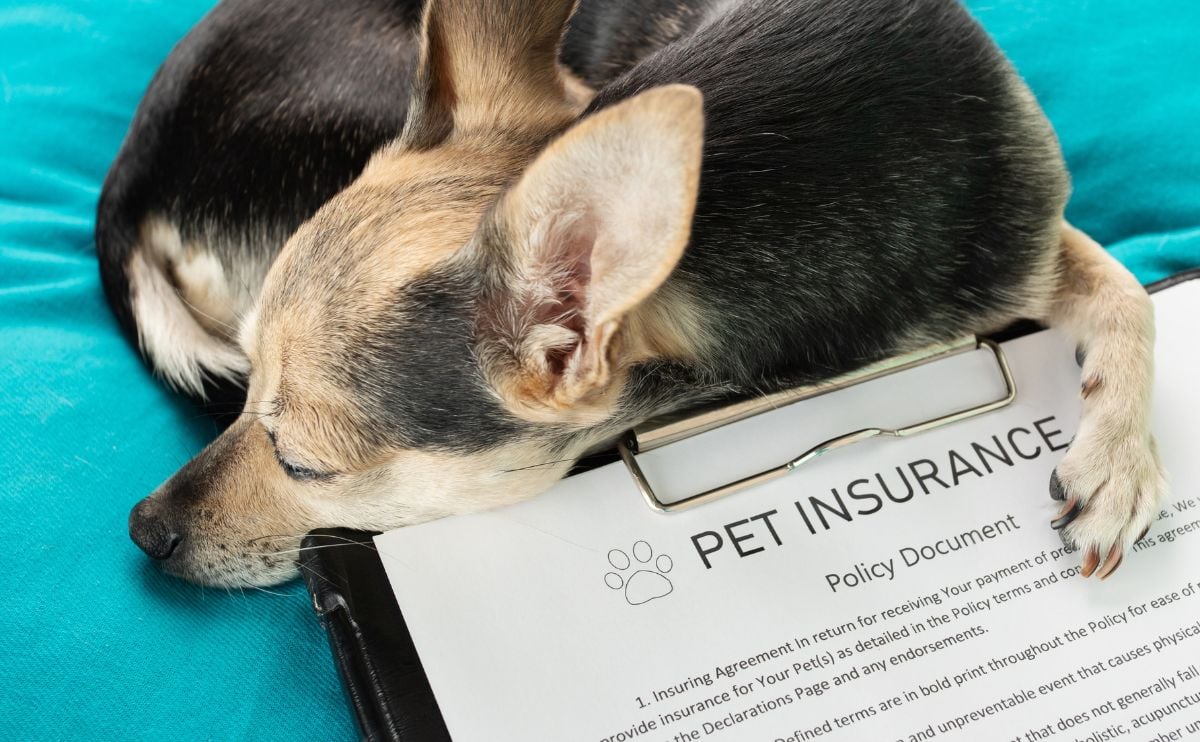
What You Need to Know About Pet Insurance
Once the adoption is complete, consider getting pet insurance. A medical policy for dogs can help cover unexpected vet expenses. We all experience illnesses and injuries throughout our lives, and our dogs are no different. Pet insurance can reduce the impact of your dog’s emergency vet costs, so you can focus on your dog’s health and not your wallet.
Our pet insurance comparison can help you learn the differences between the most popular providers’ waiting periods, coverage, exclusions, prices, plan options, and age restrictions.
After learning about the companies, you can get a custom quote for your new pup with our pet insurance quote form. All you have to do is tell us a little about your dog, and you’re presented with custom quotes from some of the best pet insurance companies.
The Good, The Bad & The Furry: Pros and Cons of Dog Ownership
Bringing a dog into your life is one of the most rewarding things you can do, but it’s not all tail wags and sunset walks. Dogs bring joy, companionship, and a sense of purpose, but they also require time, patience, money, and a lot of responsibility. Before you adopt, it’s important to look honestly at what life with a dog really means.
We truly believe that the good far outweighs the bad, but dog ownership isn’t the right fit for every person or household, and that’s okay. What matters most is going into it with open eyes and a realistic mindset. An unprepared home can lead to stress, frustration, and, sadly, dogs being returned to shelters. Our goal is to help you avoid that outcome.
Below, we’ve broken down some of dog ownership’s most common pros and cons. And remember, some of the so-called “cons” might actually be “pros” for you, depending on your personality, lifestyle, and sense of humor.
| Pros | Cons |
|---|---|
| Empathetic, they know how you are feeling and can tell when you need a slobbery kiss | Poop and dog hair cleanup |
| Dogs can teach children empathy, patience, and responsibility | Require you to be responsible and attentive to another living being |
| They always look like they are smiling | Maintenance (baths, brushing, meds, nails clipped, dental cleanings, etc.) |
| Always happy to see you, unmatched companionship | Take up room (dog bed, dog house, toys, food, water, yard, etc.) |
| You’re never alone; caring for a dog brings structure and purpose to your routine | Must make time to walk or exercise them |
| You build a great relationship with them and become best friends | Your sleep schedules may conflict with one another |
| Caring for another being (a great step for those considering having kids) | Additional costs for taking care of another loved one |
| Experience health benefits for humans associated with pet ownership | Boarding costs when you travel |
Adopting A Dog During The Pandemic Statistics
During the COVID-19 outbreak, shelters across the United States have seen increased interest in pet adoptions. Here are some stats from August 2020.
- According to a survey of 1,008 adults conducted by TD Ameritrade in April and May, 1 in 3 have considered getting a pet.
- The ASPCA saw a 70% increase in adoptions in April of 2020 over the same period in 2019.
- A survey of 3,000 pet parents conducted by Mira-Pet found that Americans are bonding with their cats and dogs at rates never seen before.
- 73% reported that having a pet helped them stay sane during lockdown.
- A little over a quarter of dog owners said they feared their dogs would suffer separation anxiety when the work from home period ends.
- 38% said they’d take a pay cut in order to continue working from home solely so they could stay with their pets.
11.38 million U.S. households adopted a new pet during the COVID-19 pandemic.
Post-pandemic, shelters saw a rise in returns as routines normalized. Adopt with intention, not impulse. Dogs deserve a forever home, not a temporary escape from boredom.
Why You Should Adopt, Not Shop
There’s no judgment here, but there is a truth: Adopting saves lives. Every dog adopted from a shelter makes room for another. You’re not just gaining a companion; you’re actively reducing euthanasia rates. Plus, mutts? Often healthier, hardier, and full of personality.
The ASPCA alone assisted more than 104,000 dogs in 2020. There are dogs everywhere that need your help. You could be the deciding factor between life and death. That’s why adopting a dog is such a great thing to do. Not only will you gain the most loyal best friend, but you’ll also save a life. You could also consider becoming a foster dog parent.
The Happy Ever After Starts With You
Adopting a dog is just the first step. A dog’s real happy ending depends on what comes next: a life filled with care, consistency, and unconditional love. Start with a proper diet tailored to their age, breed, and size. Nutritional needs shift as they grow, and getting it right sets the foundation for a healthy life. Routine vet visits are just as important for vaccines, check-ups, and catching issues early before they become emergencies. And don’t overlook dental care. Regular brushing and cleanings prevent pain, infection, and serious complications down the road.
Beyond health, dogs need movement and meaningful connection. Daily walks, playtime, and mental stimulation keep their bodies strong and their spirits happy. But what is the most powerful thing you can give your dog? A safe, loving home. You’re not just their caretaker. You’re their whole world. So make that world one filled with consistency, patience, and unconditional love.



